Related Research Articles
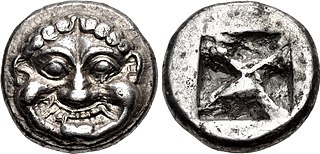
The history of ancient Greek coinage can be divided into four periods: the Archaic, the Classical, the Hellenistic and the Roman. The Archaic period extends from the introduction of coinage to the Greek world during the 7th century BC until the Persian Wars in about 480 BC. The Classical period then began, and lasted until the conquests of Alexander the Great in about 330 BC, which began the Hellenistic period, extending until the Roman absorption of the Greek world in the 1st century BC. The Greek cities continued to produce their own coins for several more centuries under Roman rule. The coins produced during this period are called Roman provincial coins or Greek Imperial Coins.
The British farthing was a British coin worth a quarter of an old penny. It ceased to be struck after 1956 and was demonetised from 1 January 1961.

Conder tokens, also known as 18th-century provincial tokens, were a form of privately minted token coinage struck and used during the later part of the 18th century and the early part of the 19th century in England, Anglesey and Wales, Scotland, and Ireland.
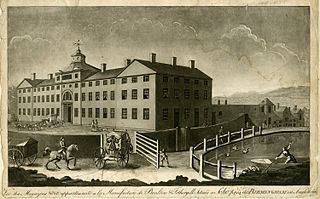
Soho Mint was created by Matthew Boulton in 1788 in his Soho Manufactory in Handsworth, West Midlands, England. A mint was erected at the manufactory containing eight machines, to his own patent design, driven by steam engine, each capable of striking 70 to 85 coins per minute.
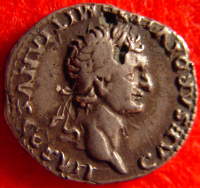
Coin counterfeiting of valuable antique coins is common; modern high-value coins are also counterfeited and circulated. Counterfeit antique coins are generally made to a very high standard so that they can deceive experts. This is not easy and many coins still stand out.
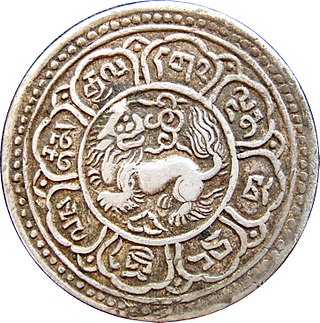
The use of historical money in Tibet started in ancient times, when Tibet had no coined currency of its own. Bartering was common, gold was a medium of exchange, and shell money and stone beads were used for very small purchases. A few coins from other countries were also occasionally in use.
Theodore Vern Buttrey Jr. was an American educator, classicist and numismatist. He is perhaps best known for his work discovering and exposing a scheme to distribute fake Western American gold bars.
A cliché coin forgery is a type of counterfeit coin produced using a genuine coin to impress a design into silver foil. Evidence of the probable manufacturing technique are finds of small lead sheets with multiple coin impressions and also fragments of impressed foils or complete 'coins'. The process seems to have involved the following steps. First, sandwiching a genuine coin between a fold of foil, generally silver, with a thickness of 50-100 microns. This was then placed between lead sheets and the pile struck with a hammer. This resulted in the foils taking an impression of each face of the coin simultaeously, also incidentally transferred to the lead sheets. The folded foil was then removed and the resulting obverse and reverse impressions were then simply soldered together, usually with tin-lead solder. The final sandwich was then trimmed to size, possibly with a 'pastry cutter' type tool, forming a circular coin.
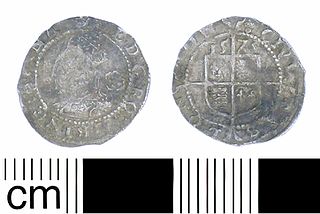
The English three halfpence, a silver coin worth 1+1⁄2d, was introduced in Elizabeth I's third and fourth coinages (1561–1582) as part of a plan to produce large quantities of coins of varying denominations and high silver content. The obverse shows a left-facing bust of the queen, with a rose behind her, with the legend E D G ROSA SINE SPINA – Elizabeth by the grace of God a rose without a thorn – while the reverse shows the royal arms with the date above the arms and a mintmark at the beginning of the legend CIVITAS LONDON – City of London, the Tower Mint.

Nicholas Gervase Rhodes was a British numismatist who specialised in the coinages of Asia, particularly those of Himalayan kingdoms and pre-Communist Tibet.

Joe Cribb is a numismatist, specialising in Asian coinages, and in particular on coins of the Kushan Empire. His catalogues of Chinese silver currency ingots, and of ritual coins of Southeast Asia were the first detailed works on these subjects in English. With David Jongeward he published a catalogue of Kushan, Kushano-Sasanian and Kidarite Hun coins in the American Numismatic Society New York in 2015. In 2021 he was appointed Adjunct Professor of Numismatics at Hebei Normal University, China.
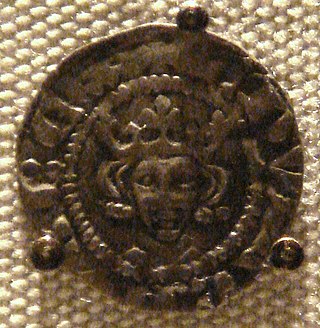
The English farthing was a coin of the Kingdom of England worth 1⁄4 of a penny, 1⁄960 of a pound sterling. Until the 13th century, farthings were pieces of pennies that had been cut into quarters to make change. The first English farthing coins were minted in the 13th century, and continued to be struck until the early 18th century, when England merged into the Kingdom of Great Britain in 1707.
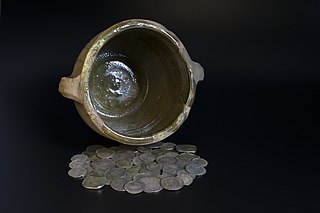
The Middleham Hoard is a coin hoard found near Middleham, North Yorkshire in England. It dates from the period of the English Civil War, and consists of 5,099 coins, all silver. It is the largest hoard of coins buried during the Civil War to have been discovered. The hoard was discovered in June 1993 by William Caygill while using a metal detector. Though referred to as one hoard, the coins were buried in three pots in two pits. These had slightly different deposition dates; likely in the later 1640s, though the person making the deposits was probably the same. The coins are dispersed between museums and private collections, 54 of them now in the Yorkshire Museum's numismatic collection.
Eloy Mestrelle, first name sometimes spelled Eloye, was a French moneyer who was responsible for introducing milled coinage to England.
Peter Blondeau was a French moneyer and engineer who was appointed Engineer to the Royal Mint and was responsible for reintroducing milled coinage to England. He pioneered the process of stamping lettering onto the edge of coins.

The Castaing machine is a device used to add lettering and decoration to the edge of a coin. Such lettering was necessitated by counterfeiting and edge clipping, which was a common problem resulting from the uneven and irregular hammered coinage. When Aubin Olivier introduced milled coinage to France, he also developed a method of marking the edges with lettering which would make it possible to detect if metal had been shaved from the edge. This method involved using a collar, into which the metal flowed from the pressure of the press. This technique was slower and more costly than later methods. France abandoned milled coinage in favour of hammering in 1585.
Jean Castaing was a French engineer and inventor of the Castaing machine, a device used to add edge lettering to coins. Though edge lettering had existed for over a century, the earliest methods were costly and time-consuming. In 1649, Peter Blondeau introduced a new method at the Royal Mint in England, which he kept secret. Later, in 1685, Castaing proposed that his machine be used in the mints of France. His proposal was approved, and Castaing later became general manager of all the mints in the nation.
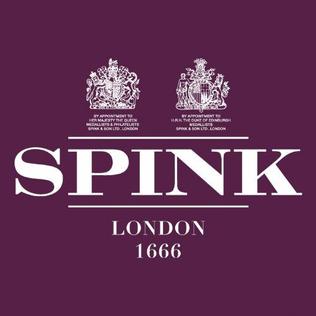
Spink & Son is an auction and collectibles company known principally for their sales of coins, banknotes and medals. They also deal in philatelic items, wine and spirits, and other collectible items.

Siege money or money of necessity is a form of Notgeld that was issued in times of war or invasion, such as during a siege.
References
- ↑ Bob Forrest (Coin News, Oct 1995) From "Period Coins" to Ashmore Replicas, pp36-39
- ↑ Hurter, S. Ashmore replicas, part I. Bulletin on Counterfeits, London 1995/6: vol 20 no 2, pp19-28
- ↑ Hurter, S. Ashmore replicas, part III. Bulletin on Counterfeits, London 1999: vol 24 no 1, pp21-23
- ↑ Finn, P. Ashmore replicas - revisited. Spink Numismatic Circular, London 2000: issue 108, pp50-54
- ↑ Medieval English Hammered Farthings - Known Counterfeits http://hammered_farthings.tripod.com/counterfeit/index.htm